QATAR 2022
Argentina vs Croatia – what the data tell us about today’s World Cup semifinal
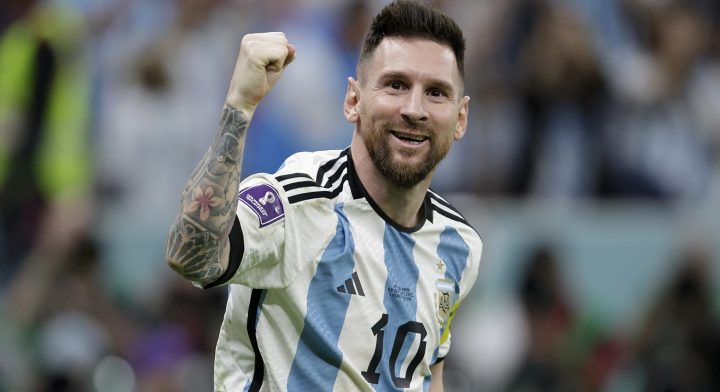
Did you get Croatia, Argentina, Morocco or France in the office sweepstake? For you – and the millions of fans back home those teams represent – the World Cup dream is still alive, something even the best statistical models would not have predicted.
Most surprisingly, Morocco have become the first African team to reach the World Cup’s last four in the competition’s 92-year history. More predictably, France and Croatia have qualified for the semifinals for the second tournament in a row.
Meanwhile, Lionel Messi is two games away from hugely increasing his chances of being remembered as the greatest of all time, with Argentina one win from contesting two of the past three World Cup finals.
Ahead of Argentina’s clash with Croatia today (Tuesday), this is a data-led semifinal preview.
Momentum
Lionel Scaloni’s Argentina have built impressive momentum at the World Cup since their first group match ended in a shock 2-1 defeat to Saudi Arabia – a result that reverberated around the world.
Their quarterfinal clash with the Netherlands on Friday saw the youngest manager in the tournament face the oldest one in Louis van Gaal, and Scaloni ultimately won their tactical battle.
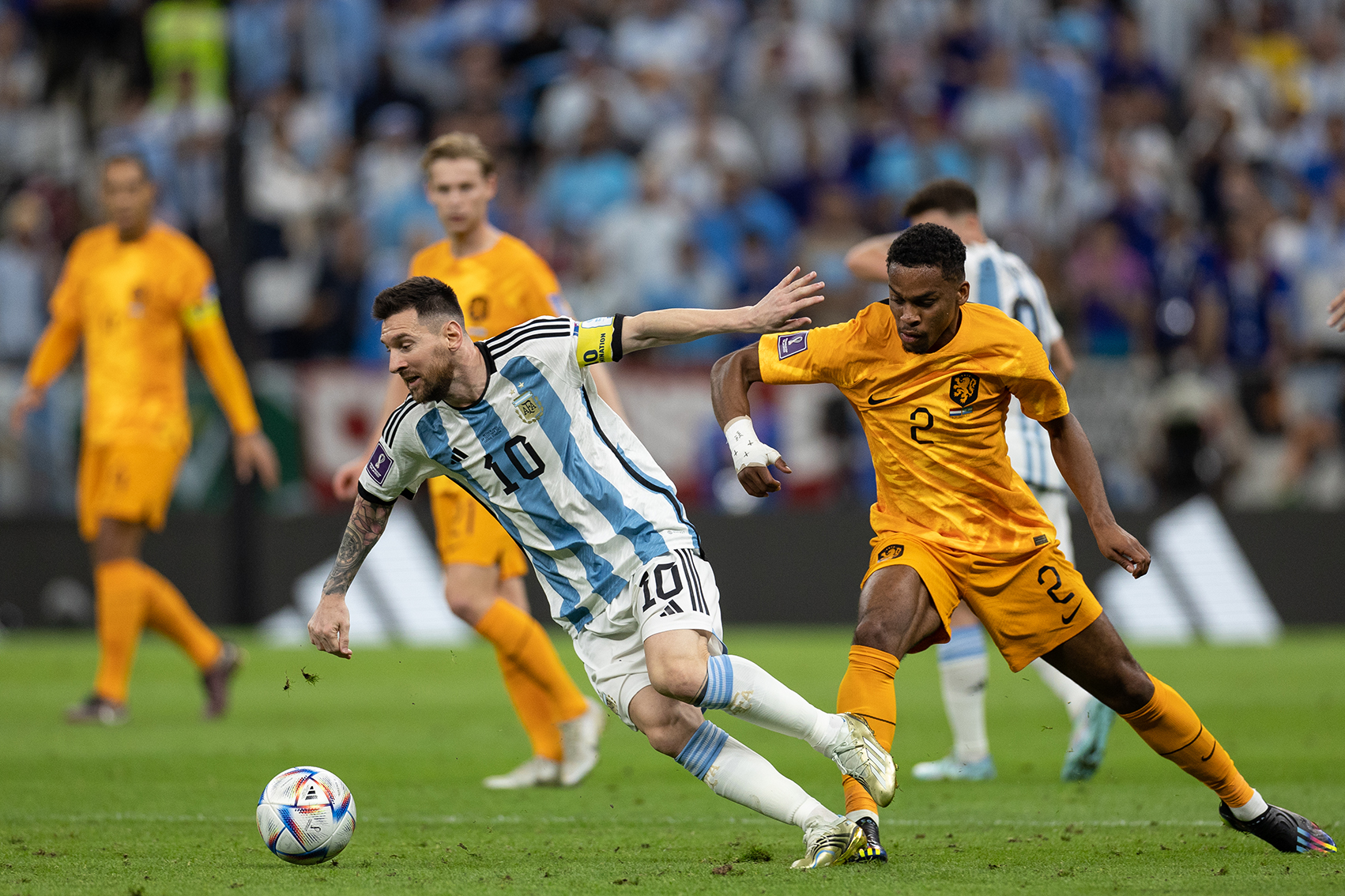
Lionel Messi is challenged by Jurrien Timber during Argentina’s quarterfinal against the Netherlands. (Photo: Simon Bruty / Anychance / Getty Images)
Argentina started with a 3-5-2 to match up the Dutch approach, and it worked well for long periods. In particular, Nahuel Molina was able to stay high and wide from right wing-back, which provided greater width to Argentina as they overloaded his side of the pitch.
This is even more noticeable given the locations of Argentina’s chance creation across the tournament.
None of the four countries still standing has a higher share of their chance creation from the central attacking third of the pitch than Argentina’s 39%. At times, this was their undoing in the group stage, where their creativity would often be funnelled into those congested areas, often to no avail.
Having Molina high and wide on their right offered a different attacking threat, as we saw from Argentina’s opening goal. While the sublime pass from Messi came from a central area, the infield run Molina made asked different questions of the Netherlands’ defence.
This is particularly important if Croatia can lock down that high-traffic zone between their box and the centre circle, where the obvious threat of Messi arises – as we see below.
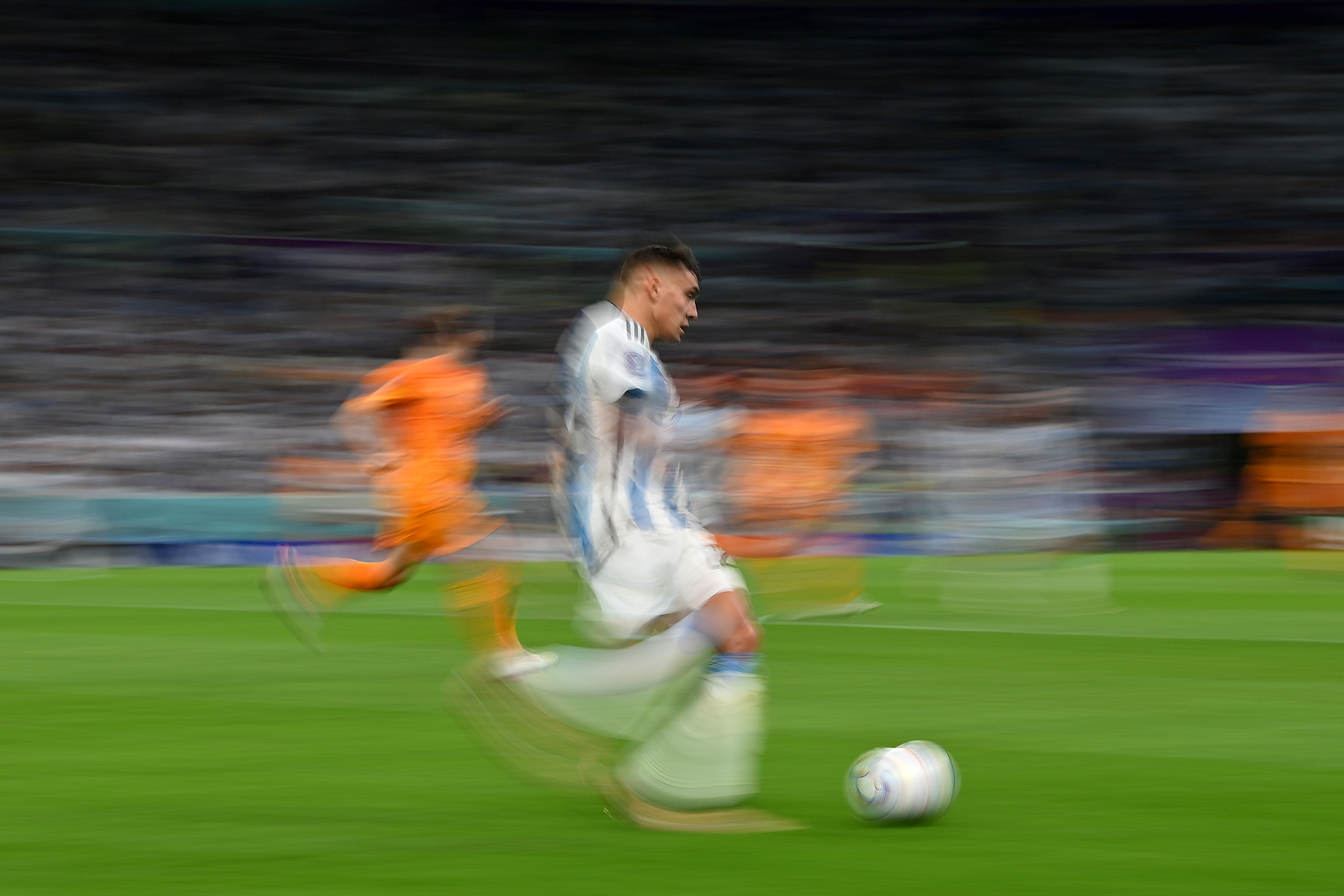
Nahuel Molina of Argentina makes a break against the Netherlands. (Photo: Dan Mullan / Getty Images)
No player in this World Cup has taken more non-penalty shots than Messi’s 22, and no player has created more than his 10 open-play chances. In the most obvious statement of the millennium, stopping Messi is easier said than done, so there may be yet another moment of magic from the 35-year-old.
However, if Argentina were to again go with a 3-5-2 tonight, it would not be viewed as a negative, defensive approach to match up their opponents, as they did against the Dutch.
Instead, it should be viewed as an attacking approach to provide them with width in key attacking areas.
Di Maria and De Paul fit to face Croatia
The Athletic’s Michael Cox has outlined how Argentina’s artistry was built on aggression during the group stage, a steeliness that was crucial in pulling them through to the knockout phase following that opening defeat.
However, that aggression was certainly in danger of bubbling over against the Netherlands.
Call it poor refereeing, call it an anomalous game of huge drama, but there were 48 fouls across the 120 minutes – more than any other fixture in the tournament so far – and 18 bookings.
Read in Daily Maverick: “Croatia in the way of Argentina’s dream of a World Cup final spot”
Included in the 18 were cautions for Argentina boss Scaloni and his assistant, Walter Samuel, and one to the Netherlands’ Denzel Dumfries after the penalty shootout was over, meaning 15 were brandished on the field during play – more than in any match in a near-century of World Cups since the first one in 1930.
Aside from the yellow cards themselves, what was most eye-raising was the tactical ill-discipline shown by Argentina at the crucial moments. Most notably, German Pezzella’s desire to win the ball resulted in them giving away a free kick in the 10th minute of second-half stoppage time.
Pezzella’s foul on Wout Weghorst – who was facing away from goal with the ball in the air – was naive and resulted in the equaliser that took the tie to extra time.
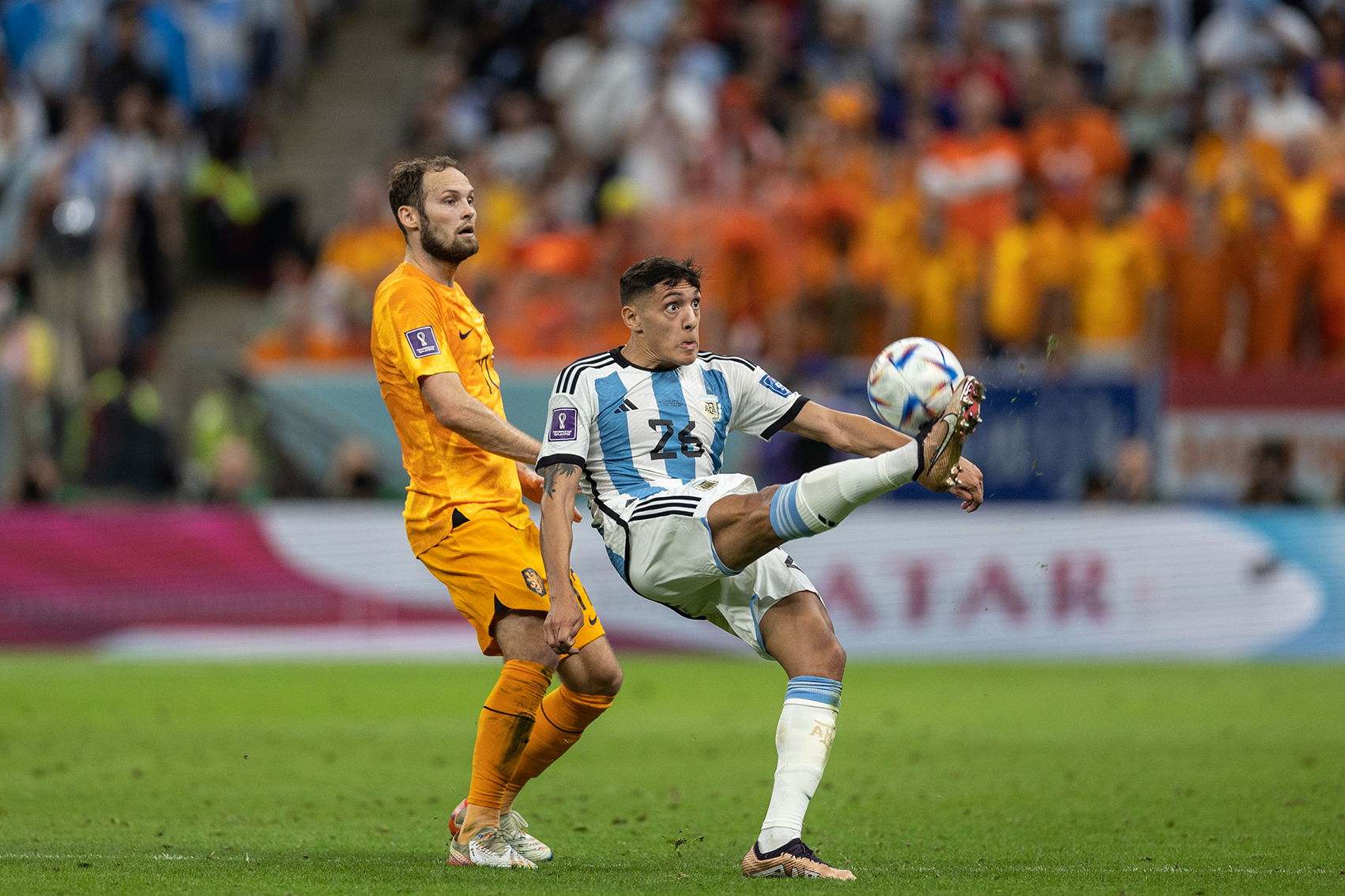
Nahuel Molina of Argentina and Daley Blind of the Netherlands in action during their World Cup quarterfinal. (Photo: Simon Bruty / Anychance / Getty Images)
Of course, Emiliano Martinez’s penalty shootout heroics meant Argentina were not punished for such petulant fouls, but they very nearly were. It’s worth noting that yellow cards will not be carried over from the quarterfinals, so a caution in the semis will not result in a player being suspended for Sunday’s final (although a red card would).
Nevertheless, Argentina do need to channel that aggression correctly against Croatia, or risk more serious consequences.
Canny Croatia
The fact that Croatia, a nation of four million people, have reached the final four of a World Cup on two consecutive occasions can only be admired. They might not have the star quality of Argentina or France, but they have consistently defied expectations to progress through to a semifinal once again.
It is worth noting that Croatia have only won one game in 90 minutes at this World Cup – the 4-1 against Canada in the group. Of course, they have not lost either, with four draws out of five being a rare record for a nation making it through to this stage.
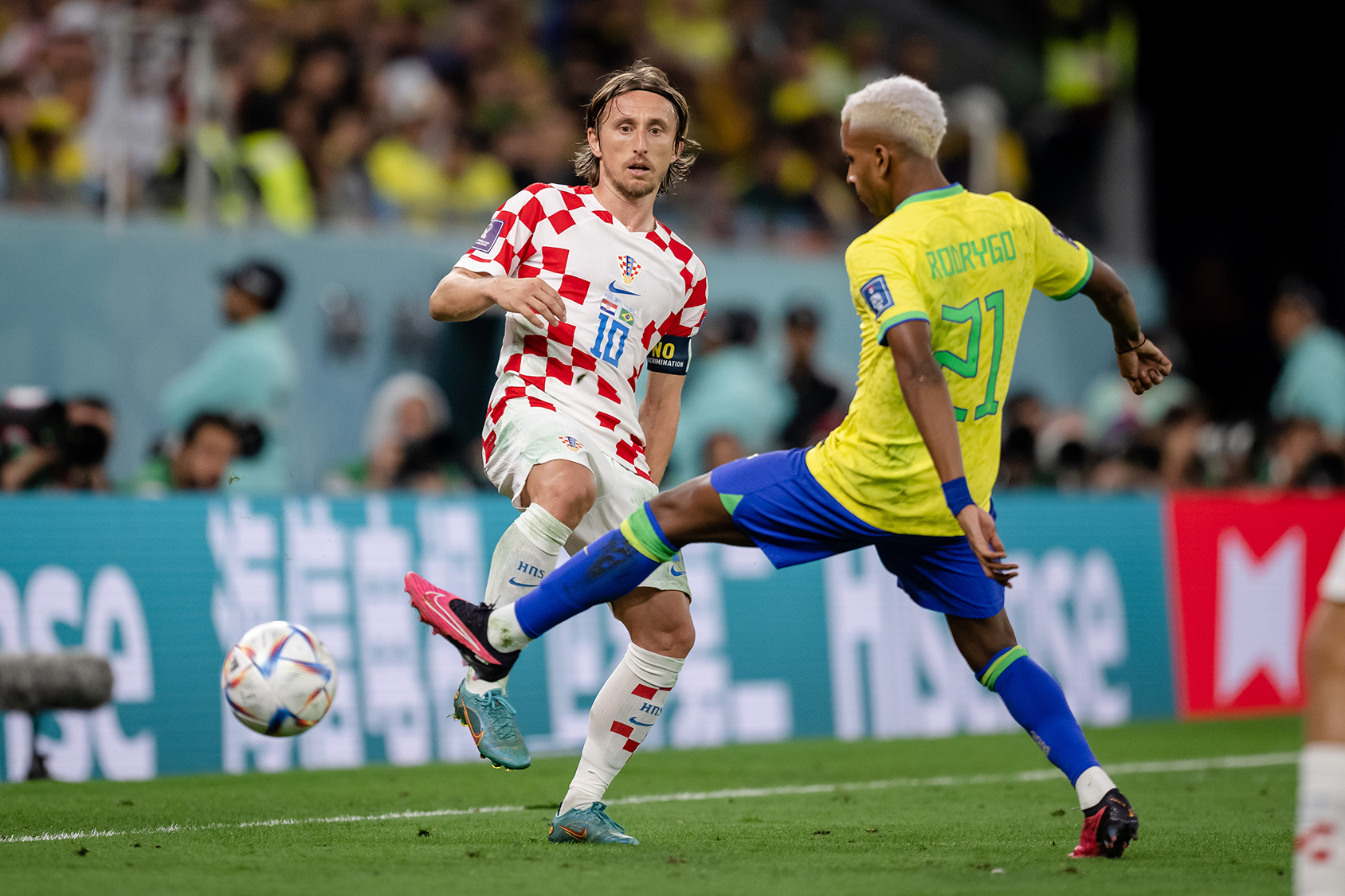
Croatia’s Luka Modric controls the ball while under pressure from Rodrygo of Brazil during their quarterfinal. (Photo: Marvin Ibo Guengoer – GES Sportfoto / Getty Images)
Looking at Croatia’s expected goal (xG) difference – which assesses the quality of chances created and conceded – their -0.4 per game is one of the lowest among the 16 nations who made the knockout phase.
On balance, Croatia have conceded as many chances as they have created, but this is the thing about xG – it is far more volatile in small samples. In tournament football, things don’t even themselves out over a longer period as they would in a season lasting nine months because there is no longer period. This whole competition will take four weeks.
If Croatia can continue to defy the odds with limited attacking potency, then that is just simply part of the World Cup structure.
Their two draws so far in the knockout phase meant winning two penalty shootouts was enough for them to progress to the semis. Their manager certainly backs his side when ties have to be decided by spot kicks.
“I believe we become favourites in penalty shootouts because our opponents know how good at them we are,” says Zlatko Dalic. “It is almost like they have lost already.”
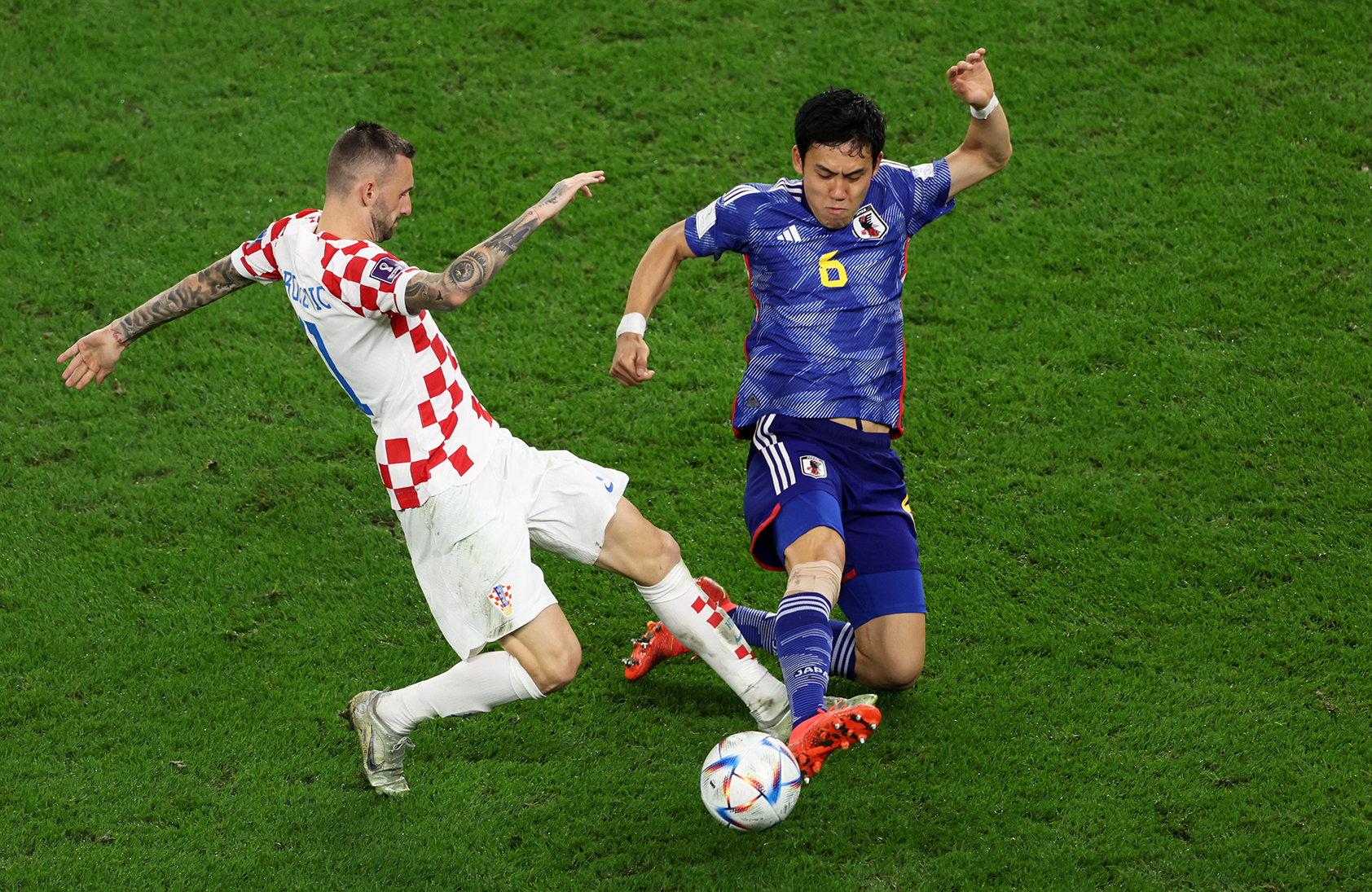
Wataru Endo of Japan is challenged by Marcelo Brozovic of Croatia during their last-16 clash. (Photo: Clive Brunskill / Getty Images)
Dalic has every reason to feel that way. Croatia are only the second country in the history of the World Cup to have been in as many as four penalty shootouts and never lost – joining the Germans in that exclusive, impressive club. Their overall conversion rate in shootouts of 78% is only matched by their semifinal opponents Argentina.
If this semifinal does go the distance, for a third consecutive game for Croatia, you know who to put your money on.
Of course, they will be hoping it doesn’t come to that, and their key strength to win the game without resorting to another shootout undoubtedly comes from their strength in central midfield.
Visit Daily Maverick’s home page for more news, analysis and investigations
“I can say we have the best midfielders ever – (Marcelo) Brozovic, (Luka) Modric and (Mateo) Kovacic. If they are in the game, we will control it 90%.” Croatia right-back Josip Juranovic certainly sounds confident in his teammates – and he has every right to be.
Broadly speaking, the roles fall to Kovacic carrying, Modric play-making and Brozovic holding.
Modric magic
Of course, they each do a mix of the above, but Modric in particular is enjoying a fine tournament yet again. No player still involved in this World Cup has made more passes into the final third than his 54.
While he is enjoying a less-advanced role compared with tournaments gone by, at age 37, his influence has not waned. Modric’s 22 passes into the final third in the 120 minutes of their quarterfinal against Brazil were more than any other player on the pitch.
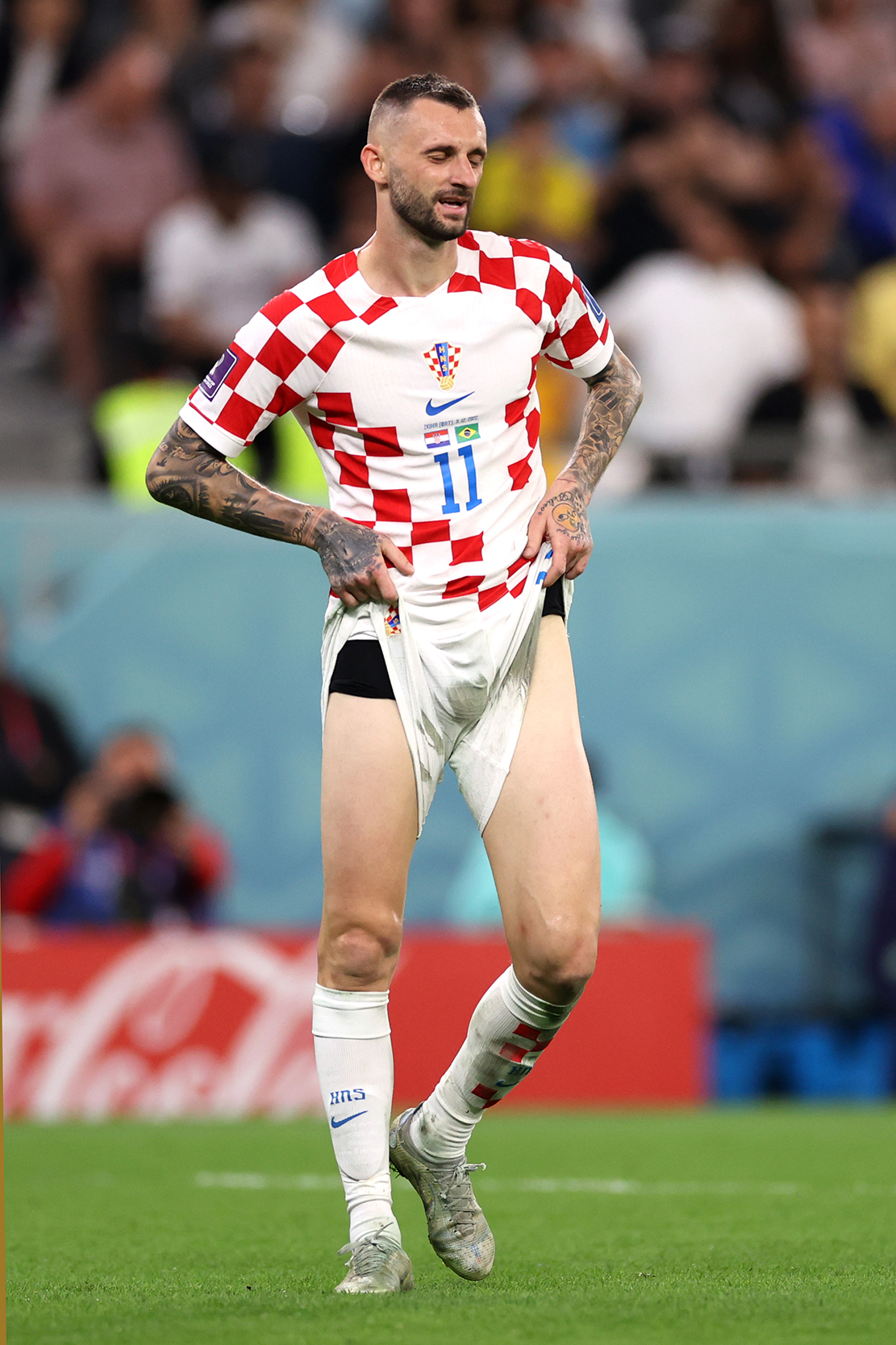
Marcelo Brozovic of Croatia reacts after a missed chance against Brazil. (Photo: Michael Steele / Getty Images)
Modric’s influence might be further heightened in this meeting with Argentina, given the threat of Messi drifting towards the left half-space. If Croatia can lock down the right-hand side with territorial dominance, Argentina’s threat there will be dampened.
Read in Daily Maverick: “Dreams crushed but it’s back to the daily grind for heartbroken players”
That was the trend we saw against Brazil, where right-back Juranovic’s positive running was enough to not only nullify the threat of opposite number Vinicius Jnr, but also expose the gaps vacated by Brazil down that flank.
With Modric dictating from the right of central midfield and Mario Pasalic dropping in while Juranovic bombed on from deep, there was a clear approach from Croatia throughout the game. Their 47% of attacking touches down the right flank was the highest share across their five World Cup games.
However, one thing Argentina won’t be threatened by is Croatia’s pace in transition.
Of the countries still in the tournament, Croatia’s eight direct attacks – defined as possessions that start in a team’s defensive half and result in a shot or touch of the ball in the opposition penalty area within 15 seconds – are comfortably the lowest; indeed, they are the only one of the four teams still in single figures, despite playing an hour of extra time against Japan and Brazil.
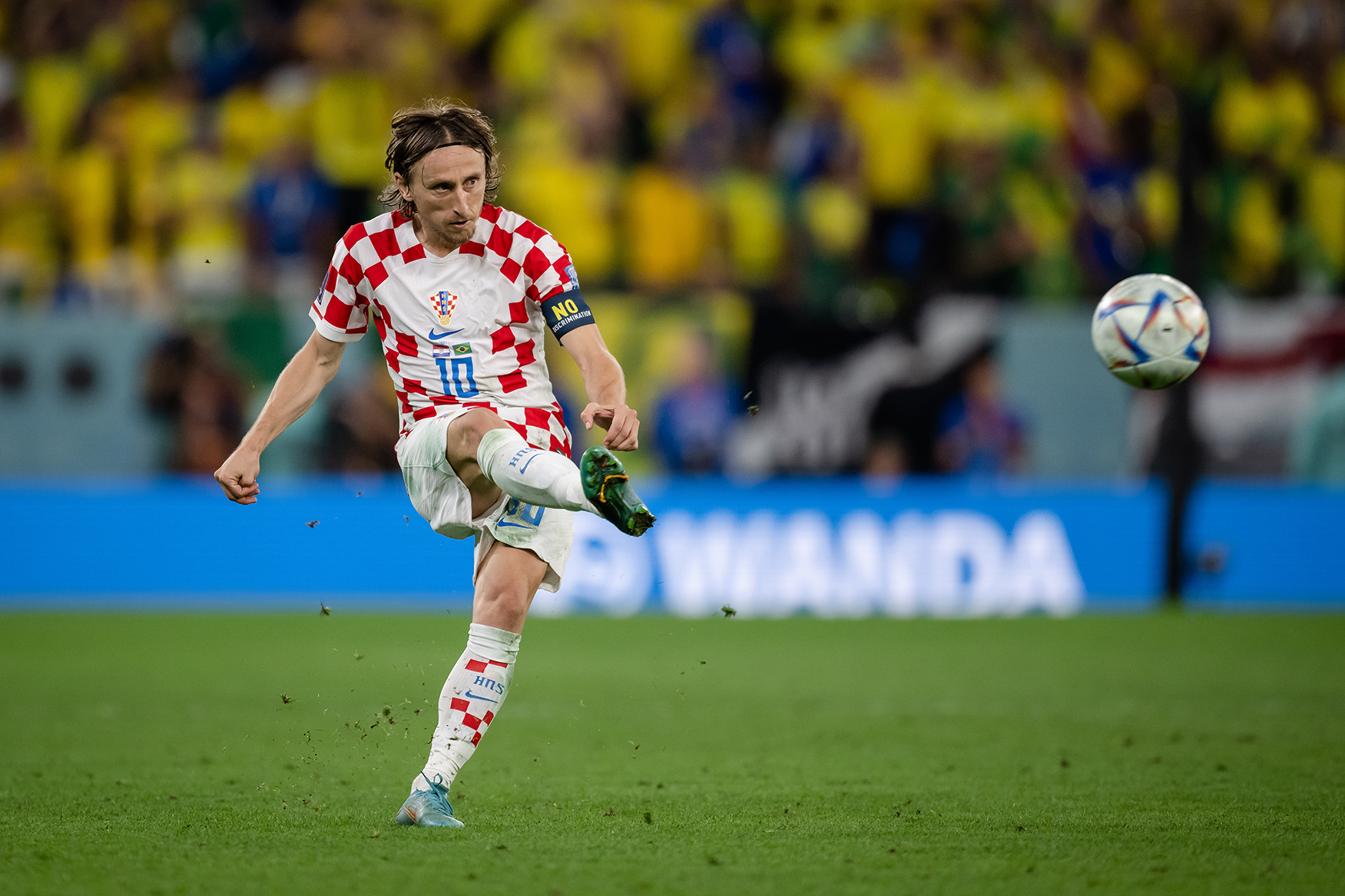
Luka Modric controls the ball during Croatia’s quarterfinal against Brazil. (Photo: Marvin Ibo Guengoer – GES Sportfoto / Getty Images)
They don’t have players with the speed to scare Argentina in behind, but their strengths lie elsewhere – namely, that midfield.
You could write off Croatia against the attacking threat of Messi and company, but haven’t we done that before?
Just as this whole tournament has been, the outcome of this match is very tough to predict. DM
This article originally appeared in The Athletic.



















 Become an Insider
Become an Insider
Comments - Please login in order to comment.